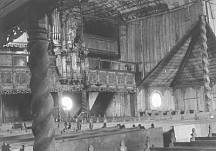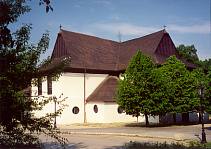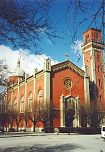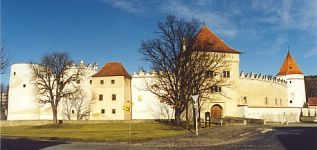
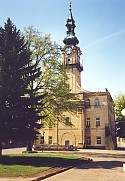
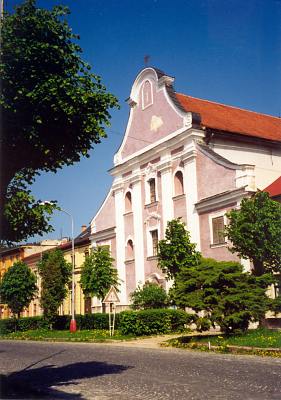
Kežmarok is one of the centres of the Spiš a region with a rich history
and an amount of valuable historical monuments. It's a seat of district. The town lies
under the High Tatras (Vysoké Tatry) mountains, 630 m above the sea level..
The town was founded in 1269 combining several slavic and german
settlements. In the 15th century it was granted the rights of a free royal town
and received several privileges, e.g. the right of sword, right to use its own coat-of-arms or a problematic right of store, having engendered the so-called hundred -
years war with the nearby town Levoča. The right of store was a great advantage -
Kežmarok lied by an important shipping route that connected the Orient with
the north of Europe. There were also many crafts working in Kežmarok (between
the 15th and the 19th century there were almost 40) that contributed noteworthy to the
development and a good image of the town.
Construction of the castle in 1463 was an important milestone in the history
of the town. As an integral part of the town fortification, it was primarily intended to be
a defending castle; its owners, however, have for centuries been striving to take possession
of the free royal town and its inhabitants. The quarrels culminated after the arrival of the Thököly family - street fights, plunders and robberies were on daily order. After
almost 250 years of problems (in 1702) the town, together with its inhabitants succeeded in
gaining the castle into its possession.
Kežmarok has an amount of historical monuments - the evangelical Wooden articular
church (1717), New evangelical church (1894), the Lyceum (1776 - 76) with one of
the biggest school historical libraries in central Europe, catholic Holy Cross
Basilica (with the oldest parts from the 13th century), originally gothic
town hall (1461), Redoute (cultural centre of Kežmarok), the castle
or the Paulinius church.

